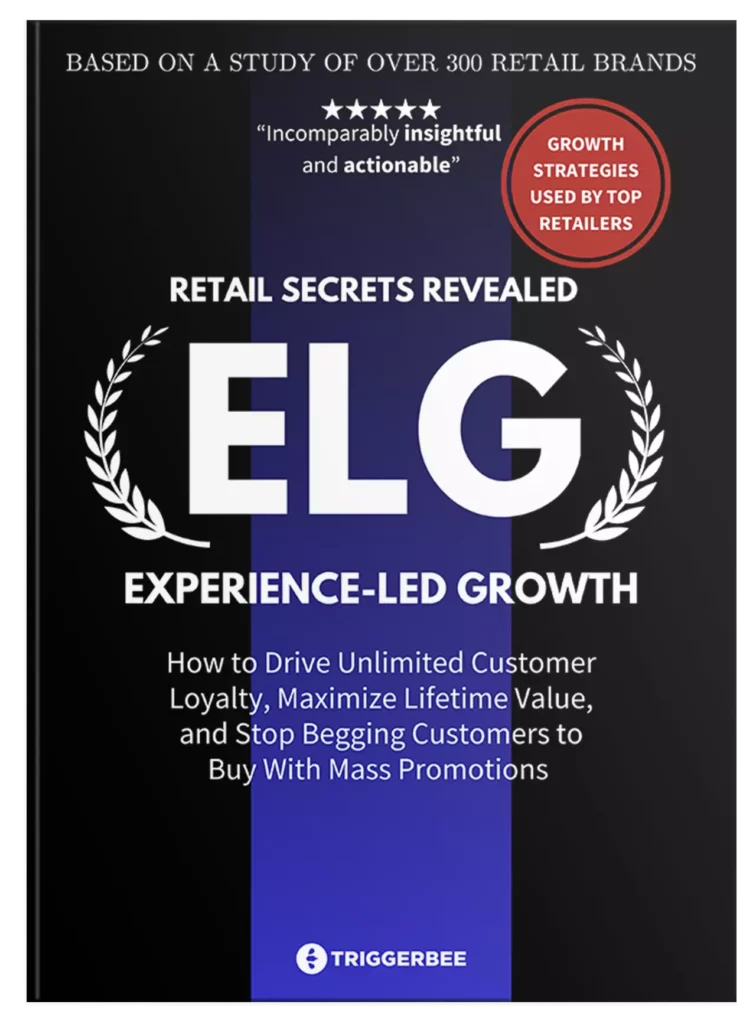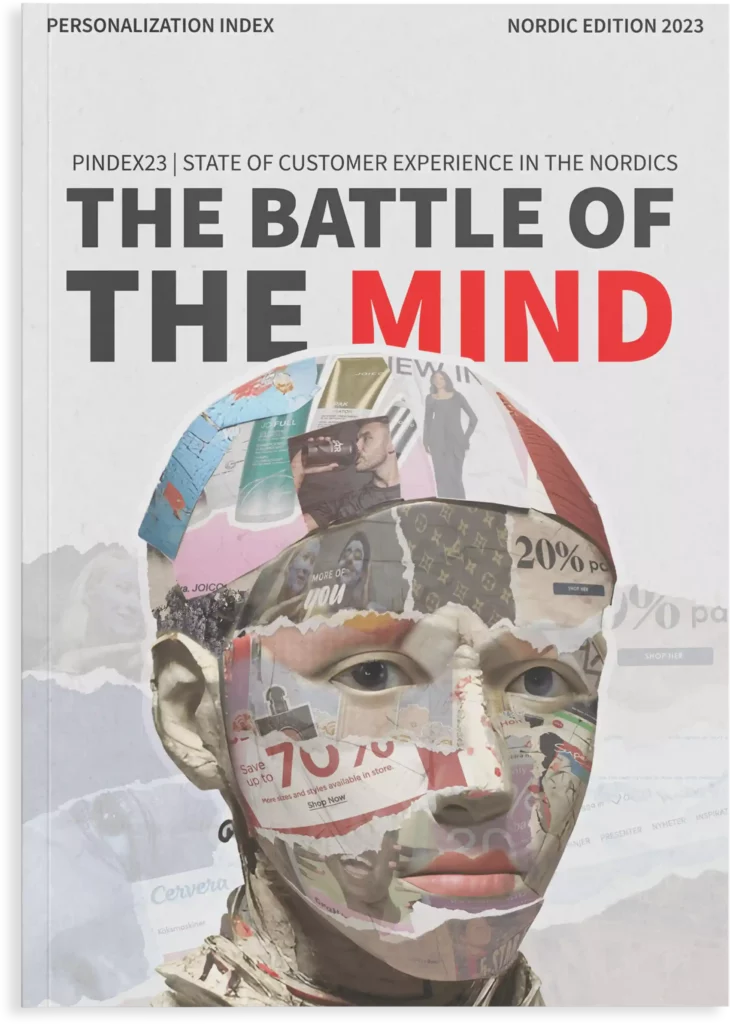Customers are 5x more likely to recommend brands with awesome customer experiences to their friends. And something to keep in mind is that for every complaint you get, there are about 26 dissatisfied customers who are not speaking out.
Knowing what your customers think and feel has never been more important. And CSAT surveys can help you uncover what you need to fix in order to deliver a world-class customer experience that your customers want to recommend to others.
What is a CSAT survey?
CSAT stands for Customer Satisfaction Score, and it’s a survey that usually contains a simple question with a response based on a scale of 1-5. The standard CSAT survey question is: “How satisfied are you with your shopping experience?”
CSAT surveys offer a powerful way to understand your customer’s short-term satisfaction and how they feel when interacting with your brand or going through their customer journey.
The most common way of measuring CSAT is by asking customers to rate their satisfaction with a product or service on a scale of 1-5 where 1 means “Very dissatisfied” and 5 means “Very satisfied”.
The rating scale can be visualized using plain numbers or any icon to represent the difference between the highest and lowest end of the scale.
Most importantly, CSAT surveys provide an opportunity for your customers to voice their opinions and give direct feedback, which helps you build better customer relationships.
CSAT vs NPS – When to use which survey type?
CSAT surveys are best for measuring short-term satisfaction, and transactional interactions, and pinpointing specific areas of improvement throughout the customer journey.
NPS surveys are best for measuring long-term loyalty and benchmarking yourself against your industry and competitors. You can design and publish NPS surveys using Triggerbee, and in emails. If you are looking to use an NPS survey in your emails, you can generate an NPS survey using our email NPS generator.
So, how do you decide which survey type to use? Well, it depends on what timeframe you are measuring, and what you want to measure.
Use a CSAT survey if you want to find out:
- What do your customers think about your overall shopping experience…
- If your loyalty members are satisfied with their membership…
- How your support reps are performing…
- How satisfied your customers are with their last purchase…
- If your customers can find all the information they need on the product page…
What is a good and bad CSAT score?
CSAT scores range between 0%-100%, where 0% is awful, and 100% is awesome.
A good CSAT score is typically considered to be anything above 80%. A bad CSAT score is anything below 50%, indicating that the customer had a negative experience.
It’s important to regularly monitor your CSAT scores and take action to address any issues quickly. You can also use this data to identify potential areas of improvement in terms of product quality or customer service processes.
What makes a good CSAT survey? Examples and best practices
The standard CSAT template is as follows:
- A simple question that asks “How would you rate your {activity} experience?”
- A rating scale of 1-5 or 1-7
- A follow-up question that asks the user to leave a comment or explain the reasoning behind their response
- Optionally, you can add a third question that asks “Is it OK if we follow up on your response?”. This can help you both build your audience and get a chance to talk to your customers 1-on-1 to uncover even more insight.
At its core, CSAT is a super-simple survey, and since it only has two questions it comes with a pretty high completion rate.
However, if you want to maximize your response rates, here are some best practices to keep in mind:
Ask for the customer’s rating first
By asking your customers to leave a rating the first thing they do, you increase the validity of the answer. If they are answering a bunch of questions without knowing why they are doing it, they can become annoyed and give you a bad rating just because they don’t understand the purpose of the survey.
Don’t ask more questions than you need
If you don’t need the data for your research, don’t ask for it. All it does is create an annoying survey that confuses customers as to why they are answering it.
Use reasonable wording for your response labels
Use neutral wording like “wonderful” and “awful”, “great” and “not good”, or “best” and “worst”. The labels are just to give the user a hint to help them quickly understand what the scale rating means.
Use ONE scale for all your CSAT surveys
By using the same scale whenever you run a CSAT survey makes it easier to track your results over time. And more often than not, moving up from 1-5 to 1-7 just adds a lot of noise to your score without increasing the value of the result. Pick one scale, and stick to it.
Don’t get hung up on using numbers or smileys (they work equally well)
What type of question you use to measure CSAT depends entirely on your personal preference, and what fits your brand. If your brand is super serious, then go with plain numbers. If your brand is more playful, then why not go with a smiley-rating
Collecting CSAT responses
Here are some examples of situations where you should ask for a CSAT survey.
Before and after a website redesign: Before you launch your new design, run a CSAT survey to all new customers on the thank-you page. This will act as your baseline result. When you have launched your new design, run a CSAT survey for all new customers on the thank-you page again. This will help you gauge whether your new design was a success right off the bat, or if it needs some improvement.
Post-purchase: This is one of the best times to get feedback from your customers. Why? Because they just bought something from you. Which means they’re super engaged with your brand. And they can tell you exactly how they feel about your product, delivery, and support. So make sure to show a CSAT survey right after they make a purchase.
After customer support interactions: According to a study by Zendesk, 66% of customers say that customer service is the most important factor in their loyalty. That’s why you want to ask for feedback every time a customer interacts with your support team. This way, you can measure how well your support reps are doing. And how happy your customers are with the help they received.
After product/service usage: If you sell a product or service that requires ongoing usage or subscription, you need to keep tabs on how your customers are using it. And how satisfied they are with the overall experience. The best way to do that? Send them periodic surveys through email or in-app. This will help you understand what they like and dislike about your product or service. And how you can improve it to make them happier.
Event-based triggers: Another smart way to use CSAT surveys is to trigger them based on specific events or milestones in the customer journey. For example, let’s say a customer attends a training session, completes a project, or reaches a significant milestone in using your product. These are all great opportunities to ask for feedback. Because they can tell you how satisfied your customers are with the value they’re getting from your product or service.
Abandonment or churn points: Sometimes customers leave and you have no idea why. You can hypothesize, but if you want to know for sure you need to ASK. They might abandon their shopping cart, cancel their subscription, or stop using your product or service altogether. When that happens, you want to know why. And the best way to find out is to send them a CSAT survey. This will help you uncover the reasons behind their decision. And maybe even win them back.
Strategies for increasing CSAT response rates
How do you get more customers to respond to your CSAT survey? Make it easy and rewarding. Here are some tips on how to do that.
Use great UX design. Make sure your survey is clean, simple, and doesn’t look like a survey from 1995. Since CSAT is a 1-5 scale, you can use basically any type of icon and graphic to represent each step of the scale. Why not use smileys, hearts, or stars for the survey to feel more engaging and click-worthy?
Target the right audience. Your CSAT Survey doesn’t need to be broad. Sometimes you just want to survey a specific segment of your customers.
Keep it short. Don’t ask too many questions or make your survey too long. Ideally, you want to ask one question: “How satisfied are you with [Experience]/[Interaction]?” And maybe a follow-up question to get some feedback. Anything more than that could lower your response rate.
Make it intuitive. Depending on the context, you can use popup surveys, insert it as an embedded widget, or use a callout. For example, if you’re using a post-purchase CSAT, embed it right on the page. If you want to know how satisfied your users are with their entire experience – use a popup.
Offer incentives. Sometimes customers need a little nudge to take your survey. And that’s where incentives come in handy. Offer them discount codes, loyalty points, free shipping, or other perks that they’ll appreciate. You can also generate unique coupon codes to add a layer of security to your survey incentives.
How to analyze and measure CSAT responses
To calculate your CSAT score, use the following formula:
CSAT Score = (Number of Positive Responses / Total Number of Responses) x 100
For example, if you received 120 positive responses out of 200 total responses, the calculation would be as follows:
CSAT Score = (120 / 200) x 100 = 60%
In this case, the CSAT score would be 60%, indicating that 60% of respondents had a positive satisfaction rating based on your defined criteria. However, keep in mind that CSAT scores are generally quite high, and the score itself might not mean that much except that your users didn’t have a bad experience.
Instead of blindly focusing on your score, look for anomalies. For example, out of 120 positive responses, how many of these were neutral?
A sudden spike in neutral or low satisfaction results can indicate that something has happened on your website, or signal an issue that needs to be addressed.
Summary
Bottom line? Customer satisfaction is CRITICAL for your business success. And CSAT surveys are one of the best ways to measure it. Why? Because they let you know how your customers feel about your product or service. And how you can make it better for them.
CSAT surveys help you track short-term satisfaction and spot any issues or problems in the customer journey. A good CSAT score is usually above 80%. But if your score is below 50%, you have some serious work to do.
How do you create a killer CSAT survey? Simple. Just follow these tips:
– Ask clear and relevant questions.
– Use easy-to-understand rating scales.
– Make the survey fun and engaging.
How do you get more people to take your survey? Here are some proven strategies:
– Use a user-friendly survey interface.
– Choose the right time to ask for feedback.
– Offer incentives to your customers.
How do you analyze your survey results? Here’s what you need to do:
– Calculate your CSAT score.
– Look for any anomalies or changes in customer satisfaction.
By focusing on customer satisfaction and using CSAT surveys, you can build stronger customer relationships and get more referrals for your brand.


